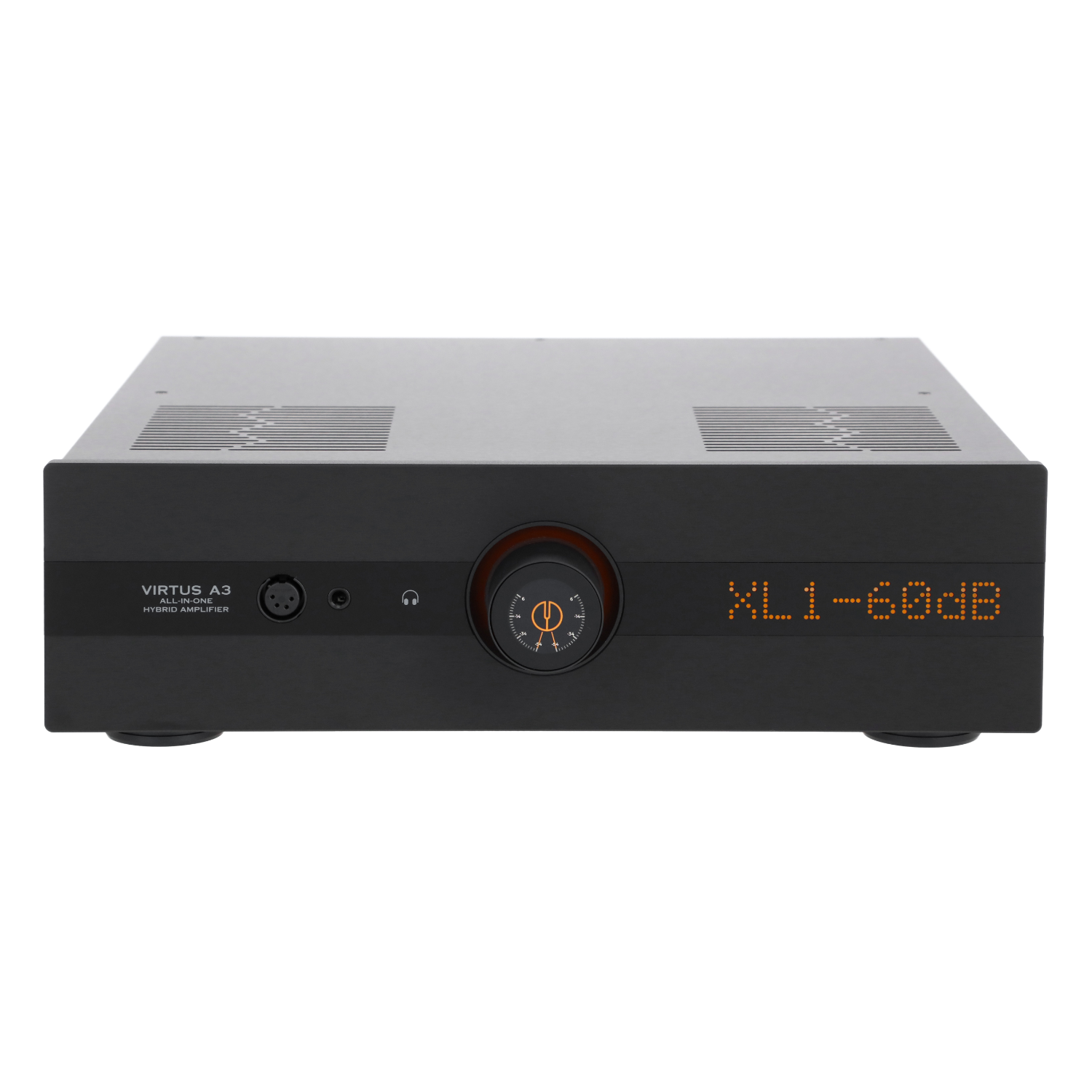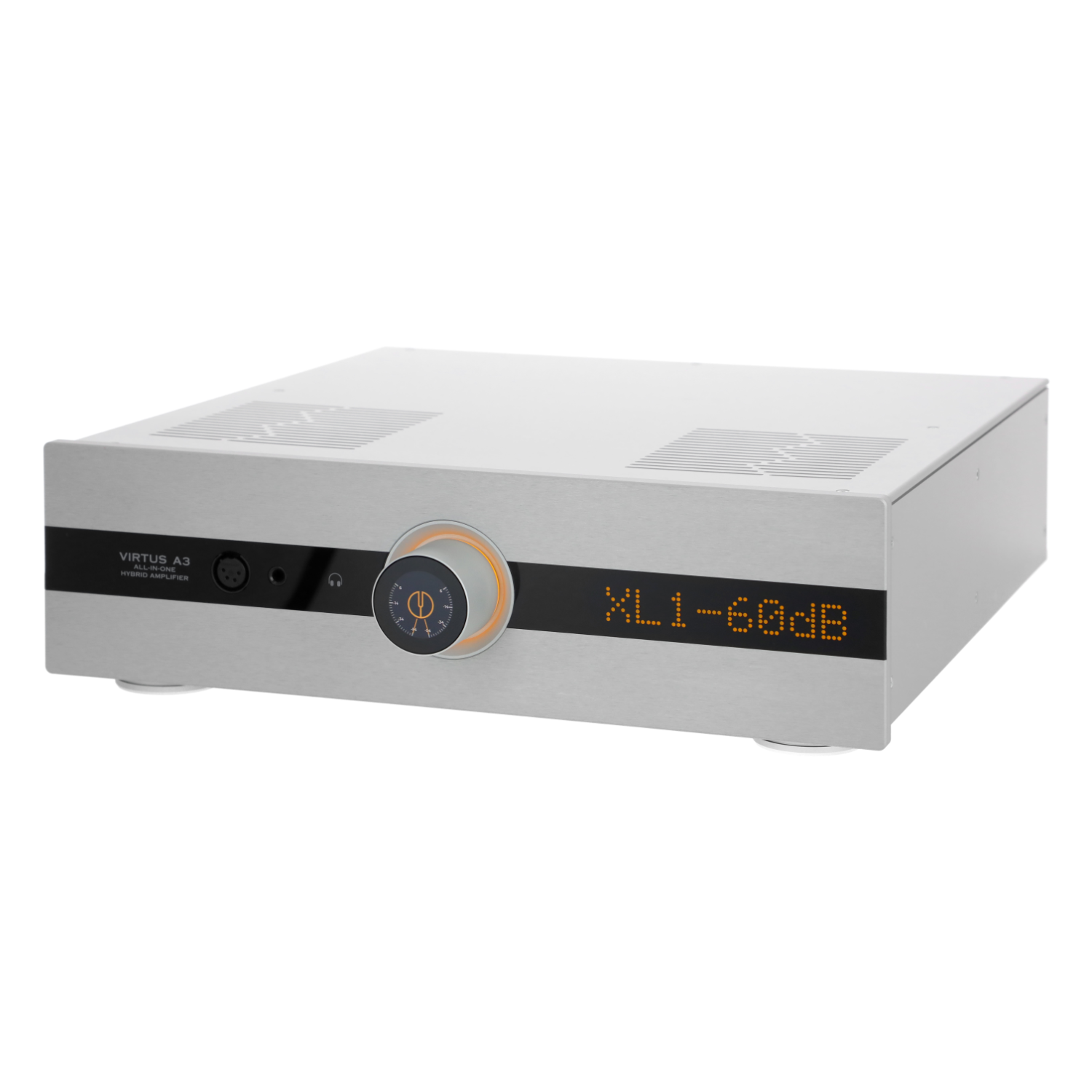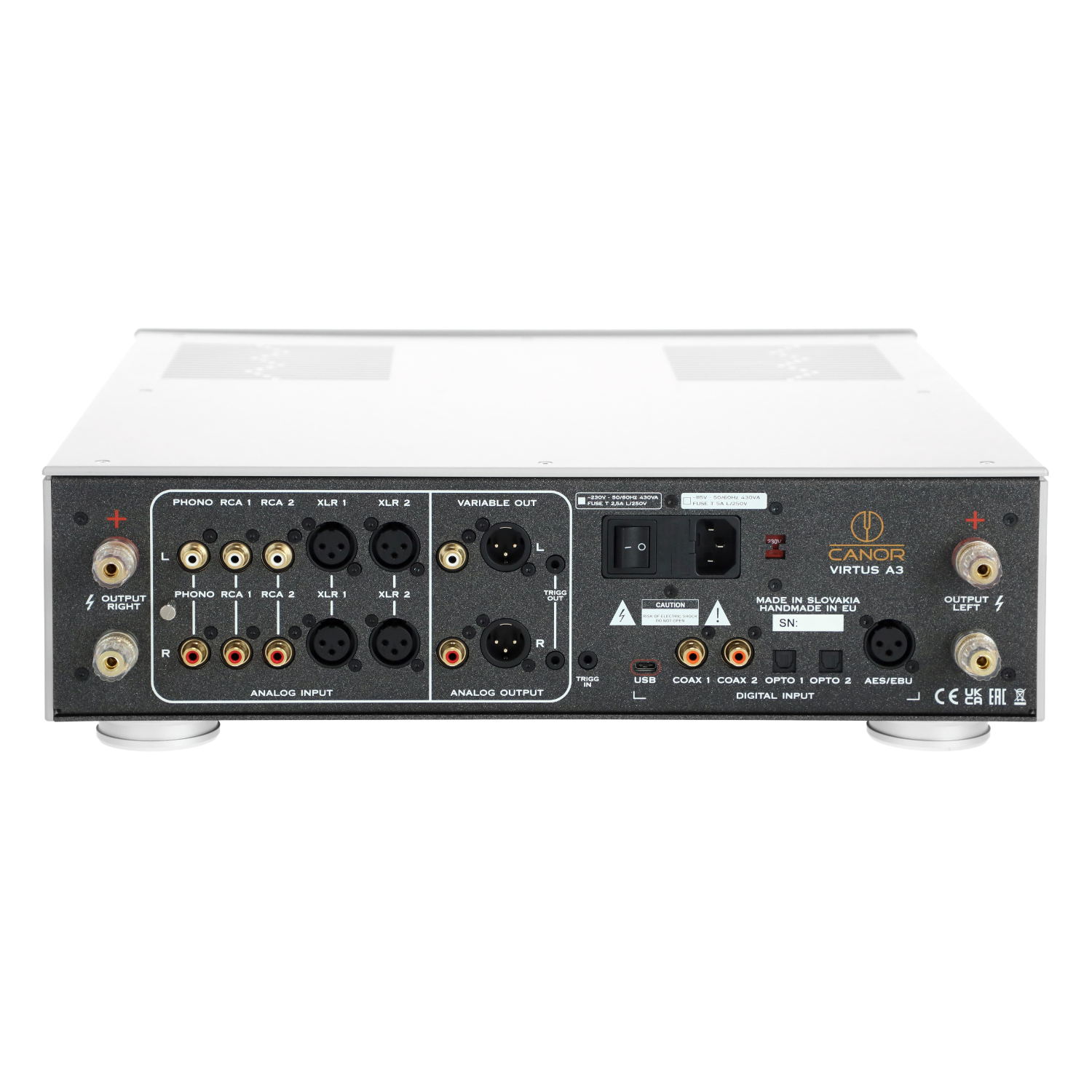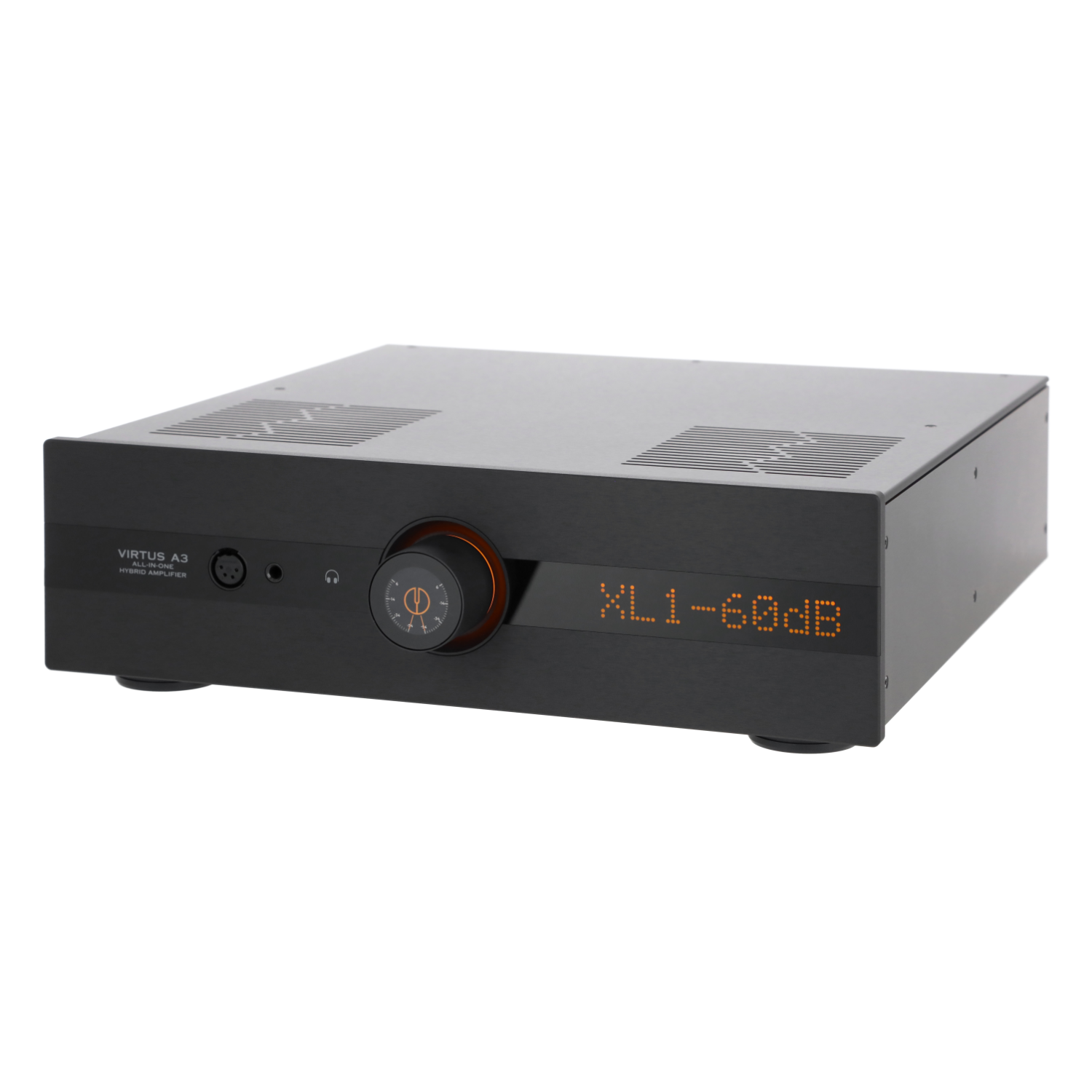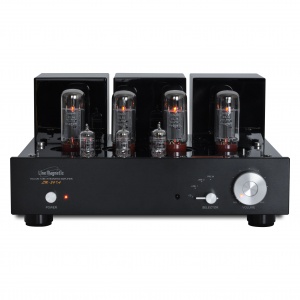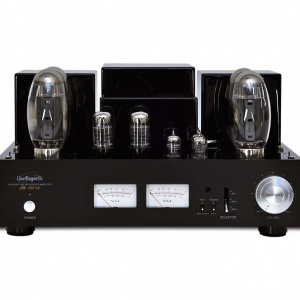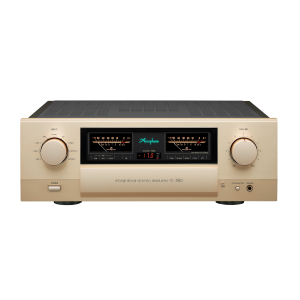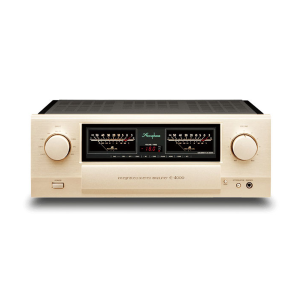Digital Signal Path
The USB input is Galvanically isolated to prevent Ground loops between a typically noisy computer environment and the “Delicate” Audio system. During this isolation process, the USB signal is also re-synchronized to a local low-phase noise reference clock to attenuate the input USB jitter (and improve the USB Eye Pattern). The USB input is also RF-filtered to reduce external RF energy entering the Audio system. The combination of Galvanic isolation, USB Jitter attenuation, and RF filtering serves to “Detox” the external USB signal as much as possible before being fed to the Virtus A3’s internal USB Decoder circuitry.
The Asynchronous USB input supports PCM Audio Data up to 768 kHz / 32 bits and native DSD to DSD512. Besides the USB input, Optical, Coax, and Balanced AES-EBU inputs are supported and employ a digital-based PLL circuit to attenuate incoming signal jitter. Dual ESS DACs are used for digital-to-analog signal conversion and employ discrete analog regulators for their critical DAC arrays.
Vibration-isolated Low-phase noise clock oscillators serve as the ESS DACs Master clocks. The balanced analog output from the ESS DAC array is operated in Current Mode (I/V Mode) for maximum linearity (minimum voltage coefficient modulation of the DAC’s internal resistor array to reduce distortion).
The analog stage features a unique Jfet-based fully symmetrical gain stage with High current Class A output stages. This gain stage design implements simple second-order filtering with a unique topology that allows a passive first-order filter stage for maximum RF attenuation of the high-frequency energy from the ESS DAC array. This passive filter node helps reduce high-frequency RF noise currents causing possible intermodulation of the sensitive analogue active stages.

